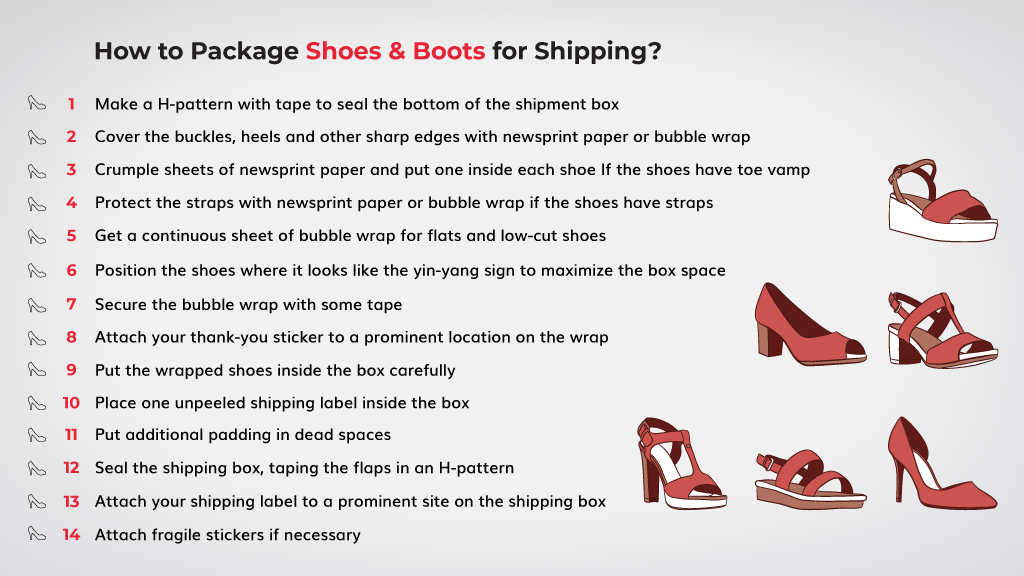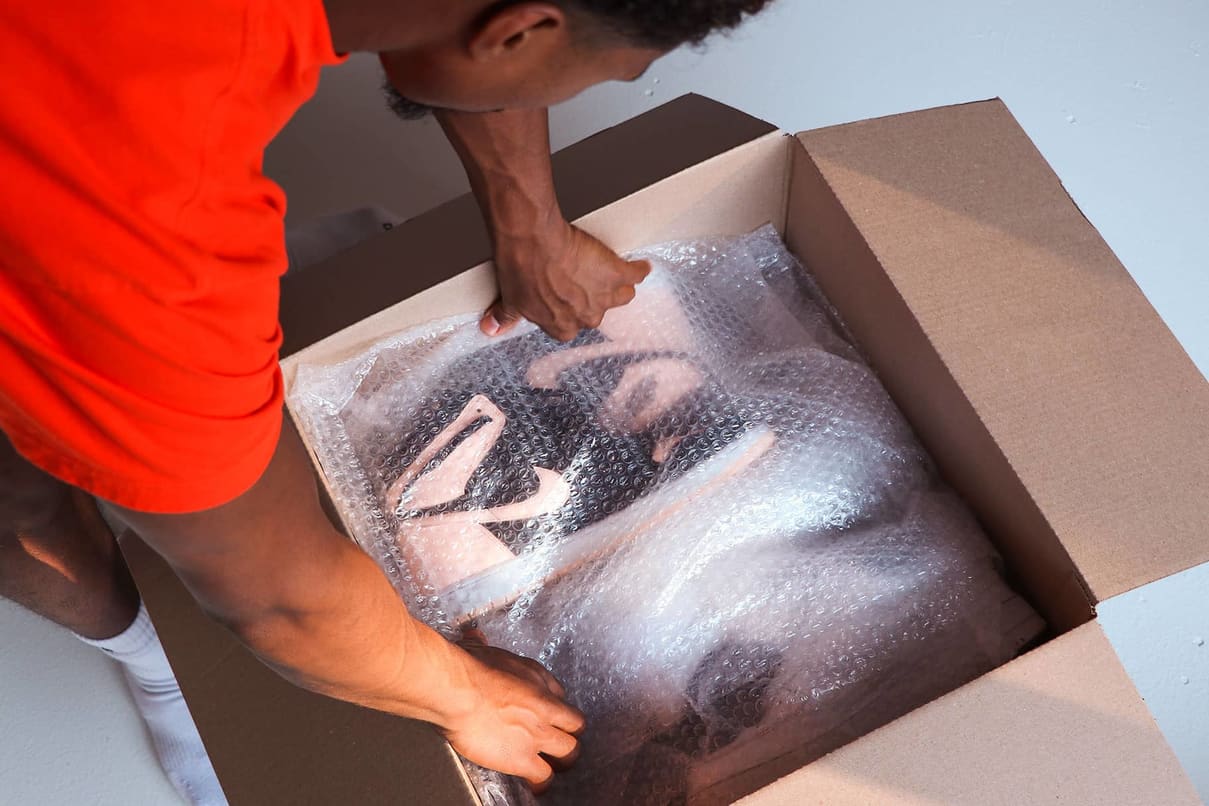Shipping shoes may seem like a straightforward task, but if you want to ensure that they arrive at their destination in pristine condition, you’ll need to consider several factors. From choosing the right packaging materials to employing the best techniques, every step is crucial. Whether you are a business owner selling footwear or a shoe enthusiast sending a pair to a friend, understanding how to package shoes for shipping is essential. In this article, we’ll explore the best practices, tips, and techniques to package shoes efficiently.
Why Proper Packaging Matters
Before diving into the details of how to package shoes for shipping, it’s important to understand why it matters. Proper packaging protects the shoes from physical damage, moisture, and other environmental factors. Shoes are delicate and can be easily scuffed, scratched, or damaged during transport. The cost of replacing a damaged pair can be significant, especially if they are high-end or limited edition. Additionally, well-packaged items reflect professionalism, enhancing your brand’s image if you are in the footwear business.
Case Study: The Importance of Packaging
Consider the story of a small shoe retailer who began to experience an increasing number of returns due to damaged products. After investigating, they realized that their shipping practices were subpar. The shoes were often sent in flimsy boxes or even plastic bags. When they revamped their packaging methods, incorporating sturdier boxes and protective cushioning, returns dropped by 40%. This not only saved them money but also improved customer satisfaction.
Essential Packaging Materials
To package shoes effectively, you’ll need a selection of materials. Below is a list of essential packaging materials along with their relevant uses.
1. Shoe Boxes
Your first line of defense is a good-quality shoe box. If the shoes come in their original box, use that. If not, consider investing in generic shoe boxes designed for shipping. These boxes are often sturdier than standard cardboard and will better protect the shoes during transit.
2. Bubble Wrap
Bubble wrap is a fantastic protective material that cushions the shoes and absorbs shocks during transport. It’s especially useful for delicate items like high heels or fashion-forward sneakers.

3. Packing Tape
Strong packing tape is a must. You’ll need it to seal the box securely. Make sure to use a tape designed for shipping to avoid any unwanted openings during transit.
4. Packing Paper or Peanuts
Packing paper or peanuts can fill any empty spaces within the box, preventing the shoes from shifting during transit. This is crucial for maintaining their shape and preventing damage.

5. Labels
Don’t forget labels! Clearly marking your package with the sender’s and recipient’s addresses ensures smooth handling and delivery.
6. Moisture-Wicking Materials
If you’re shipping shoes in humid conditions, consider including moisture-wicking materials to prevent mold and mildew. Silica gel packets can be an effective solution.

Step-by-Step Guide to Packaging Shoes for Shipping
Now that we’ve covered the importance of packaging and the essential materials needed, let’s walk through a step-by-step guide on how to package shoes properly.
Step 1: Prepare the Shoes
Before packaging, clean the shoes to remove any dirt or debris. This not only makes them look better when they arrive but also minimizes dirt transfer to the packaging materials.

Step 2: Use the Right Box
Place the shoes inside their original box if available. If not, use one that is appropriate in size. The box should be sturdy and provide adequate protection.
Step 3: Wrap the Shoes
Wrap each shoe individually with bubble wrap to secure them and protect them from any impact. This is especially important for delicate designs or premium materials.

Step 4: Fill the Box
Place the wrapped shoes into the box. If there is extra space, fill it with packing paper or peanuts. This helps prevent movement and potential damage during transit.
Step 5: Seal the Box
Using strong packing tape, seal the box securely. Make sure the tape covers all openings and corners for maximum security.

Step 6: Label and Ship
Finally, affix the shipping label on the top of the box. Make sure it’s clearly visible and legible. If possible, include a “Fragile” sticker to highlight the delicacy of the contents.
Common Packaging Mistakes to Avoid
Even with the best intentions, it’s easy to make mistakes when packaging shoes for shipping. Here are some common pitfalls to avoid.

1. Using Poor Quality Materials
Don’t skimp on quality. Using thin boxes or flimsy packing materials can lead to damages. Invest in quality supplies, even if they cost a bit more, to ensure your shoes arrive safely.
2. Not Allowing Enough Room
Packing shoes too tightly can cause them to deform. Make sure there’s enough room for cushioning materials to protect them effectively.

3. Forgetting to Label
Failing to label a package correctly can lead to delivery issues. Always double-check the clarity of addresses and the presence of any required shipping information.
Comparison Table: Best Packaging Methods
| Method | Pros | Cons |
|---|---|---|
| Original Shoe Box | Designed for the shoe, offers perfect fit | May not be available for all shoes |
| Generic Shipping Box | Widely available, sturdy options | May need extra cushioning |
| Poly Mailers | Lightweight, reduces shipping costs | No rigid structure, higher risk of damage |
| Custom Packaging | Tailored to the product, professional appearance | Higher cost and longer time to obtain |
Tips for Business Owners in the Footwear Niche
If you’re a business owner in the footwear niche, maintaining a good reputation is crucial. Here are some tips tailored to you.
1. Brand Your Packaging
Consider branding your boxes or including branded tape to enhance your brand identity. It helps in customer recognition and adds a professional touch.
2. Offer Incentives for Returns
Encourage feedback on your packaging. Offering discounts on future purchases for feedback can help you improve your packaging strategies.
3. Educate Your Customers
Provide clear instructions on how to return or exchange shoes. This can minimize the number of returns due to improperly packaged items.
Real-World Footwear Experiences
Learning from the experiences of others can provide valuable insights. Here are a couple of stories from footwear enthusiasts and businesses.
Personal Story: Sarah’s High-Value Sneakers
Sarah, a sneaker enthusiast, bought a limited edition pair of sneakers online. The seller shipped them in a standard plastic mailer with minimal protection. When Sarah received the shoes, they were scuffed and damaged. This experience not only led to a return but also a loss of trust in that retailer. Sarah now only purchases from sellers who showcase their attention to packaging detail.
Business Insight: John’s Boutique
John runs a small boutique focusing on eco-friendly shoes. He uses recycled materials for packaging, which aligns with his brand values. His customers appreciate the effort, leading to increased sales and positive feedback about the professional packaging, even though it’s environmentally conscious.
Pros and Cons of Different Packaging Types
Understanding the strengths and weaknesses of various packaging types can help you make better choices. Here’s a breakdown:
1. Pros and Cons of Standard Shoe Boxes
Pros: Provides form-fitting protection; easily available; can be reused. Cons: Can be damaged easily if not of sturdy quality; may become soggy in wet conditions.
2. Pros and Cons of Cushioned Packaging
Pros: Offers excellent protection; lightweight. Cons: May not provide shape retention; can be more costly.
Frequently Asked Questions (FAQs)
1. What is the best way to ship shoes?
The best way to ship shoes is to use a sturdy box that fits the shoes well, wrap them in bubble wrap for cushioning, and fill any empty spaces with packing paper or peanuts to prevent movement.
2. Are poly mailers good for shipping shoes?
Poly mailers can be used for shipping shoes, but they provide less protection than rigid boxes. It’s recommended to use them only for shoes that are less delicate or have a robust construction.
3. How much does it cost to ship shoes?
The cost of shipping shoes varies based on weight, size, and shipping distance. On average, domestic shipping costs can range from $5 to $15, but it’s best to check with your shipping provider for specific rates.
4. Can I use recycled materials for packaging shoes?
Yes, using recycled materials for packaging is a great way to be environmentally friendly. Just ensure that these materials are clean and sturdy enough to protect the shoes during shipping.
5. Should I insure my shoe shipments?
Consider insuring high-value shoe shipments. Insurance can provide peace of mind and financial protection against loss or damage during transit.
6. What if the shoes get damaged during shipping?
If shoes get damaged during shipping, contact the shipping carrier immediately to file a claim. If you are a seller, ensure that you have a return policy in place for such situations.
7. How can I minimize packaging costs?
Minimize costs by buying packaging supplies in bulk, reusing materials whenever possible, and choosing lightweight materials that still offer protection.
8. What packaging materials should I avoid?
Avoid using flimsy cardboard boxes, plastic bags, or materials that can trap moisture. Proper protective materials are essential to prevent damage.
9. How can I improve my packaging process?
To improve your packaging process, streamline steps, train staff, use automation where possible, and continually seek customer feedback for improvements.
Conclusion
Packaging shoes for shipping doesn’t have to be a daunting task. By following the steps outlined in this guide, you can ensure that your shoes arrive safely and in style. Whether you are a business owner or an individual shipping a pair to a friend, investing time and resources into proper packaging pays off in the long run. Remember, good packaging is not just about protection; it’s also about enhancing the overall customer experience. Happy shipping!
Consumer.gov – Shipping Best Practices
Shipping Association – Shoe Packaging Report